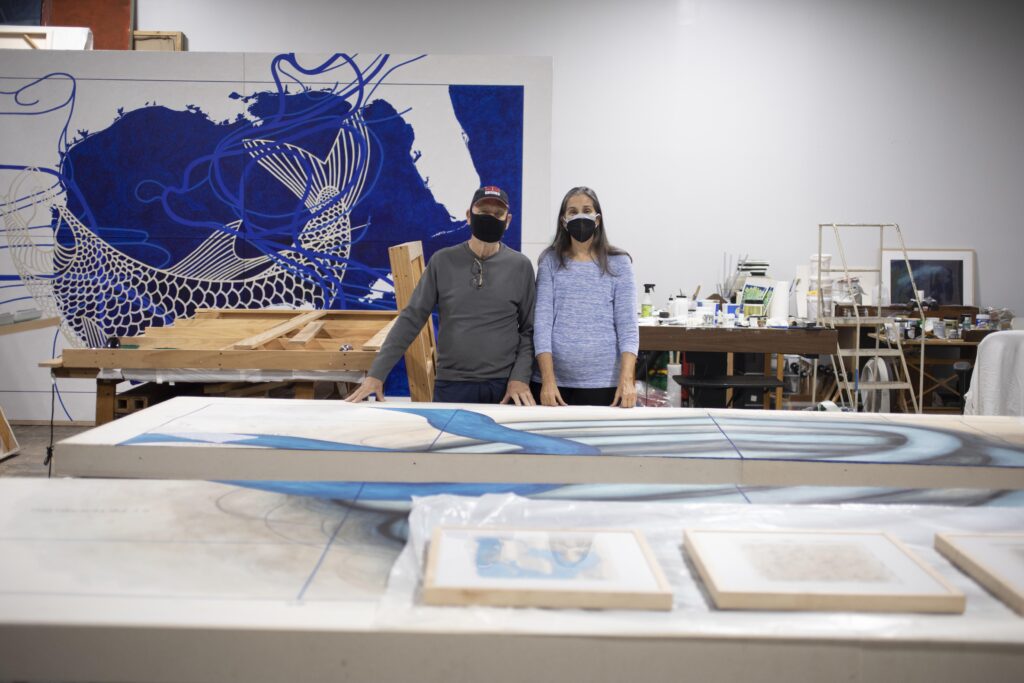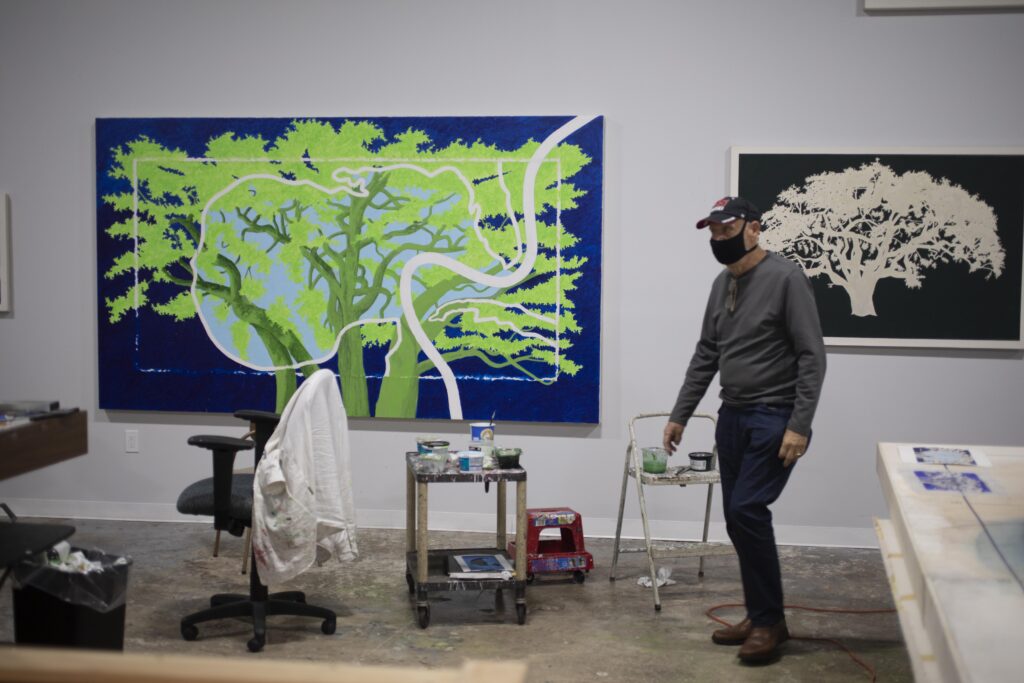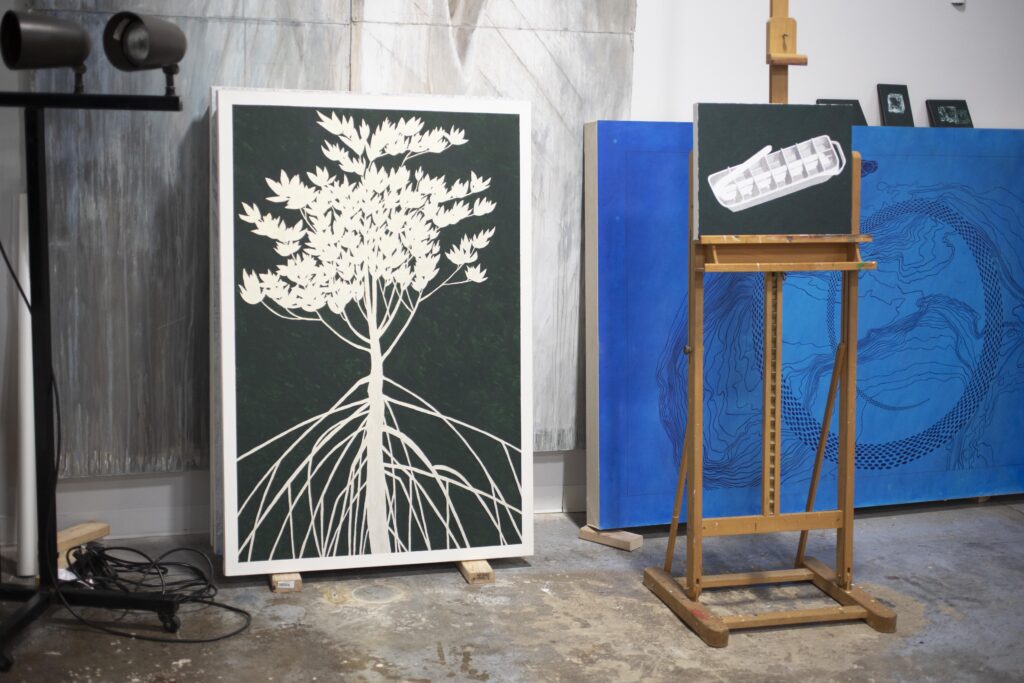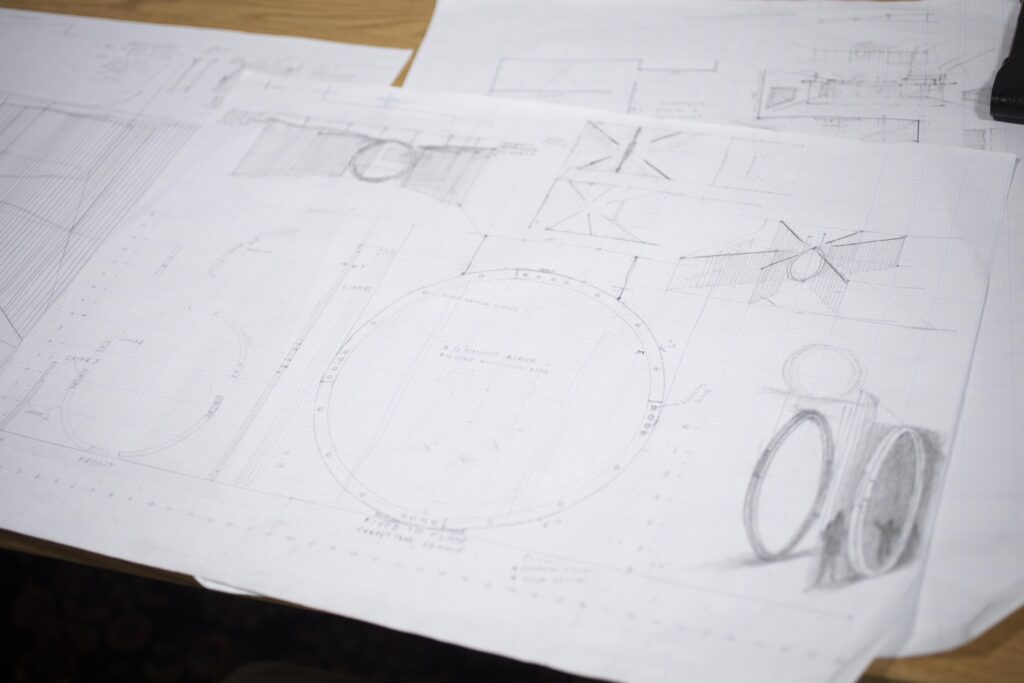March 2, 2021 | By Tom Winchester
Expanding Waters – Setting the Stage
A Conversation with Mickett-Stackhouse
. . .
 . . .
. . .
Creative Pinellas artist laureates, Dr. Carol Mickett and Dr. Robert Stackhouse, will be exhibiting recent artworks and a site-specific installation at the Creative Pinellas Gallery from March 17 to June 13. Titled Expanding Waters, the exhibition will approach the issues of climate change and sea-level rise in ways that help viewers learn about their causes and participate in their solutions.
Artworks depicting ice-cube trays and mangroves, and an immersive installation made from tape, wood and metal alloy, will provide a backdrop for performances and science-related panel discussions. The multi-disciplinary approach offers a variety of entry points for aesthetically and scientifically minded viewers alike.
. . .

Carol Mickett: This exhibition is about the importance of a community addressing a major issue. Namely, climate change and sea-level rise, and how to mitigate them.
It’s a combination of visual arts, theater, dance, literature, music and science. There will be the installation, the paintings, there’ll be an engagement room where viewers can contribute their stories and solutions to these issues – and there’ll be opportunities for actors and dancers to perform among the works.
We’ll also host three science-related panels with the help of Florida Extension from the University of Florida. They really value the arts, and they see that the arts can express these issues in creative and different ways.
The first one is called, ‘What is Climate Change and Sea-Level Rise?’ The second is, ‘What Can We Do?’ And the third is about what a green society would look like. So, we have experts from several fields, including those in art and science, contributing their expertise to addressing this issue. Florida is a key place in the discussion of climate change, and especially Pinellas County.
. . .

. . .
Robert Stackhouse: Carol will be hosting the panels, and they’ll be through the lens of art so viewers will be able to understand the material and participate. Carol will be able to bring a kind of humanity into it.
Tom Winchester: The science of climate change and sea-level rise can be very opaque. Your artworks seem to provide an entry point for viewers into these issues.
RS: Art attempts to make visible something that’s there which hasn’t been put on the surface yet, or become the fabric of everyday life. That’s what’s drastically needed.
CM: What we’re trying to do is attract a whole different audience to these issues. For example, because a mangrove forest absorbs more carbon dioxide than a rainforest, we’re exhibiting a painting depicting mangroves titled, Three Carbon Collectors (2021). The live oak is the same way. It collects a lot of carbon dioxide.
The oceans also absorb carbon dioxide, but because there’s so much of it in the atmosphere, the oceans are heating up. The ice cube tray is a symbol of mitigation because it’s the first thing you might think of when wanting to cool water.
. . .

. . .
In one painting, we depict the mangroves freezing. It’s a symbol that the mangroves are the ice-cube tray, and that the mangroves are the mitigator. The ones in gold are portraits of the mangroves. They’re meant to be honorific.
RS: Some people have said the ice-cube tray looks like a lifeboat.
TW: The works are created so the message is delivered in a nuanced way. The paintings of water, for example, can stand as formalist abstractions.
. . .

. . .
RS: We try to find a balance between the making of the art and making a statement.
We’ve been interested in water and how to depict it since about 2008. What we’re after is depicting it both two-dimensionally and three-dimensionally. We also try to create a sense of place, and in the past, we’ve been asked if we’d like to have actors and dancers perform among our sculptural installations.
I always think of things from a design standpoint. The installation has been conceived of having performers interact in it from the beginning.
Visually, the free-standing ring in the front of the installation serves as a portal through which viewers can walk through. Aesthetically, viewers will see our painting of the Moon directly through the ring on a nearby wall. The ring serves as a lens through which viewers can see the ideas of the show, including how the Moon affects water, the currents, and how those are affected by the warming of the oceans. The Moon shines a light on everything.
. . .

TW: I would say one defining characteristic of your oeuvre is that it’s multidisciplinary.
CM: It allows for a broader audience on these issues. For this exhibition, viewers may come to see the dance performance, and then engage with the issues raised by the rest of the artworks. The same may go for the performances of Shakespeare and the science panels.
We plan to record as much as we can and distribute it all online in order to engage an even wider audience.
. . .
You can follow Mickett-Stackhouse Studios on the Creative Pinellas website
or on Facebook for updates on their work.
All photos by Tom Winchester
. . .





